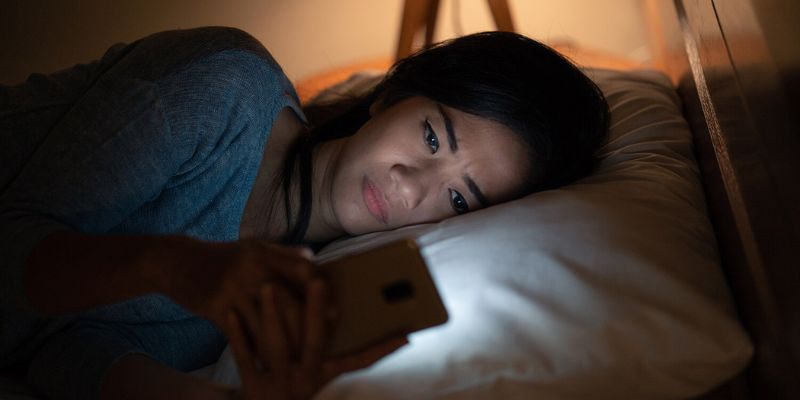Technology has become an indispensable part of our daily lives, providing us with convenience, connectivity, and access to vast amounts of information. However, it’s important to be aware of the potential negative effects that excessive technology use can have on our well-being. In this article, we will explore some of the physical issues that may arise from technology use and discuss ways to mitigate them.
Eyestrain

One of the most common problems associated with technology use is eyestrain. Whether we’re using handheld tablets, smartphones, or computers, these devices often capture our attention for extended periods, leading to discomfort and fatigue in our eyes. Symptoms of eyestrain may include blurred vision, dry eyes, and even pain in other parts of the body, such as the head, neck, or shoulders.
Several factors contribute to eyestrain, including excessive screen time, screen glare, improper screen brightness, viewing from close or far distances, poor sitting posture, and underlying vision issues. To reduce the likelihood of eyestrain, it’s essential to take regular breaks away from the screen and practice good eye care habits.
If you regularly experience symptoms of eyestrain, it is advisable to consult an optometrist for a checkup. They can provide professional guidance and recommend appropriate measures to alleviate your discomfort.
The 20-20-20 Rule for Digital Viewing
To minimize eye strain, the American Optometric Association suggests following the 20-20-20 rule. For every 20 minutes of screen time, take a 20-second break to look at something at least 20 feet away. By incorporating this practice into your routine, you can reduce the strain on your eyes caused by continuous screen exposure.
Poor Posture

The way we use mobile devices and computers can also contribute to poor posture, which may lead to musculoskeletal issues over time. Many technologies promote a “down and forward” user position, where we hunch forward and look down at the screen. This posture can put excessive pressure on our neck and spine, resulting in discomfort and pain.
A 5-year study published in the journal Applied Ergonomics found a correlation between texting on mobile phones and neck or upper back pain among young adults. Although the effects were primarily short-term, some individuals experienced long-term symptoms. However, a 2018 study in the European Spine Journal challenged these results, suggesting that texting and “text neck” did not influence neck pain in young adults. It’s worth noting that this study lacked a long-term follow-up.
Correcting posture problems while using technology can lead to overall improvement in posture and strength in the core, neck, and back. For instance, if you find yourself sitting for long periods, such as at a desk while working, incorporating regular standing or stretching breaks can help reduce strain on your body. Additionally, taking short walks around the office every hour can keep your muscles loose and promote correct posture.
Sleep Problems

Using technology too close to bedtime can disrupt your sleep. This is primarily due to the blue light emitted by devices such as cell phones, e-readers, and computers. Blue light stimulates the brain and interferes with our natural circadian rhythm, making it harder to fall asleep and potentially leaving us feeling less alert the following day.
To avoid the potential impact of blue light on your brain, it’s advisable to refrain from using electronic devices that emit blue light for at least an hour or two before bedtime. Instead, engage in relaxing activities such as reading a book, gentle stretches, or taking a soothing bath to wind down.
Reduced Physical Activity

The use of everyday digital technologies often promotes a sedentary lifestyle, which can have detrimental effects on our health, including obesity, cardiovascular disease, type 2 diabetes, and premature death. Finding ways to take breaks from sedentary technologies and incorporating physical activity into our routines can help promote a more active and healthy lifestyle.
Fortunately, certain technologies can also assist in this endeavor. Research from 2017 suggests that active technologies, such as app notifications, emails, and wearable devices that encourage exercise, can help reduce short-term sedentary behavior. By leveraging these tools, individuals can establish healthier habits and increase their overall physical activity.
FAQs
Q: Is it safe to use technology for extended periods?
A: While technology can be used for extended periods, it is important to be mindful of the potential negative effects it can have on our physical well-being. Taking regular breaks, practicing good posture, and incorporating physical activity into our routines can help mitigate these effects.
Q: How can I reduce eyestrain from using technology?
A: To reduce eyestrain, follow the 20-20-20 rule – take a 20-second break to look at something 20 feet away every 20 minutes of screen time. Additionally, ensure proper screen brightness, minimize glare, and maintain a comfortable viewing distance.
Q: Can technology use affect my sleep?
A: Yes, using technology too close to bedtime, particularly devices that emit blue light, can disrupt sleep. To promote better sleep, avoid using electronic devices that emit blue light before bedtime and engage in calming activities instead.
Conclusion
While technology offers numerous benefits, excessive use can have negative effects on our physical health. By being aware of these potential issues and taking appropriate measures to mitigate them, we can maintain a healthy balance between technology use and overall well-being. Remember to prioritize eye care, practice good posture, incorporate physical activity, and establish healthy technology habits.



